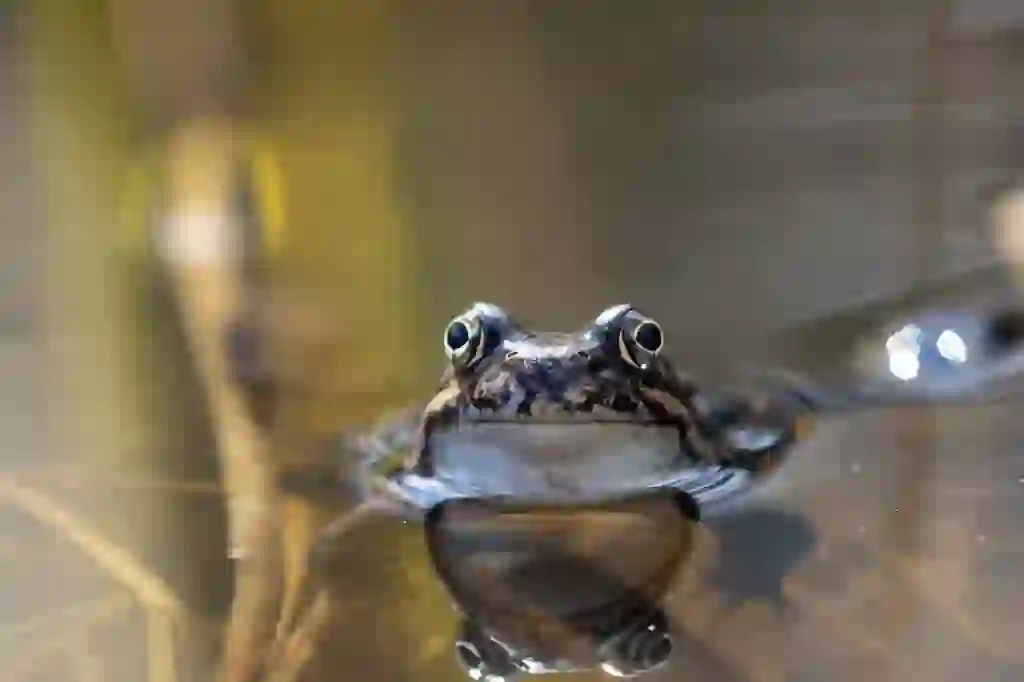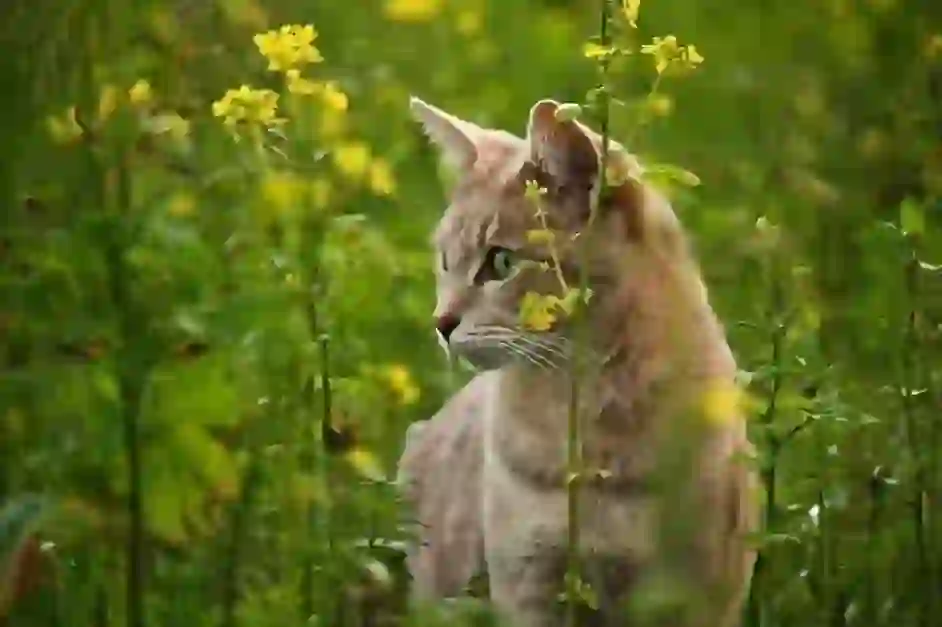
Frog
Frog
Frog
Frogs are among the amphibians that are very familiar to us humans. Many people hear their croaking during the rainy season, or have seen frogs hopping on the road on rainy days. Although they are a familiar presence, few people actually know about their ecology. Let's take a closer look at the ecology of frogs for your reference.
Frog Basic Infomation

脊椎動物亜門・両生綱・無尾目(カエル目)
体長3~80cm 体重2g~3Kg
カエルは、南極大陸を除く全大陸や島に生息しています。
一口にカエルと言っても種類はとても多く、6,579種ほどの種類が確認されています。
カエルのほとんどは水辺に生息しており、陸と水中の両方で生活する種類のものが多いことで知られています。
しかし、陸上だけで生活するものや樹の上にまでのぼって生活するものなどもいて、完全水中のものというのは多くないのです。
後肢が特に発達していて、ジャンプをするのが得意です。
また、指の間には水かきもあり、泳ぐのもとても上手だという特徴があります。
カエルは肉食で、昆虫などを食べて生きています。
日本では、カエルが生活するのに丁度よい水辺や水田が多くあったことから、昔から人々にとってなじみ深い存在として親しまれている生き物なのです。
Frog Q&A

What is the origin of the name 'Frog'?
There are several theories regarding the origin of the name 'Frog'. It is said that the name comes from the behavior of always 'returning' to the original place, hatching from an egg, or because they hibernate in winter but reappear in spring as if resurrected.

Why do frogs live there?
Frogs are amphibians, so they can live both in water and on land. While tadpoles live in water, adult frogs live on land. However, frogs still need water because they breathe not only through their lungs but also through their skin, which must stay moist. If their skin dries out, they cannot breathe properly. Therefore, frogs immediately seek water to moisten their bodies when they dry. Some frogs live in mountains or on trees, maintaining their moisture from soil, night dew, or puddles.

What do frogs eat?
Frogs hunt for small moving creatures, capturing them with their tongues. There are many tiny organisms on the ground where frogs live, such as springtails, mites, and small insects. Young frogs, which are not yet skilled hunters, feed on these small creatures. As they grow, they begin to consume larger insects such as aphids, fruit flies, and house crickets. However, they do not eat anything that is not alive.

What is the structure of a frog's body?
Frogs belong to the vertebrate group of amphibians. They have bones inside their body that provide structure and protect their internal organs. They have two front and two hind limbs, with the hind limbs being especially muscular and long for jumping. They also have toes, four on the front and five on the back, with webbing which aids in swimming. Though tadpoles are adept swimmers, frogs are better suited to walking on land as adults.

Do frogs have toxins?
When attacked by predators, frogs can secrete a white toxic fluid from their parotoid glands behind their ears, known as 'toad oil'. This secretion is milky and sticky and is toxic to the hearts of mammals, being particularly effective against dogs and cats. While not lethal to humans, it can cause severe irritation if it gets into the eyes, sometimes requiring medical attention. Always wash your hands after handling frogs.

How can you distinguish between male and female frogs?
It is almost impossible to distinguish between male and female frogs based on external characteristics alone. However, there are subtle differences between them. Males have slightly protruding snouts, while females have rounder faces. Females also have larger mouths that extend behind their ears. Adult females are generally larger than males, who reach maturity faster.

Do frogs close their eyes when they swallow food?
Frogs use their eyeballs to help swallow food. By closing their eyes, they can push the eyeballs down into the roof of their mouth, which helps push the food down their throat. Their eyes protrude when open but retract when closed.

Do frogs ever spit out their stomach?
Frogs might ingest indigestible objects, mistaking them for food. In such cases, they can turn their stomachs inside out to eject the object, clean it off with their limbs, then swallow their stomach back in.

What is a 'Frog War'?
A 'Frog War' refers to the gathering of frogs around water bodies for mating, not actual fighting. The term describes how male frogs climb onto the backs of females and grasp them tightly to facilitate egg-laying. The scene can appear chaotic as multiple males vie for a single female, sometimes kicking others away to gain position. This mating behavior was historically dubbed as a 'war' by onlookers.

Where can you observe a 'Frog War'?
Frog Wars can be observed around any body of water where eggs or tadpoles can be found, such as ponds in parks or rice fields. Look for frogs gathering at these locations, especially around 7 PM when they are most active. During the day, you might also see frogs waiting for mates or actively laying eggs.

What are frogs' natural predators?
Frogs have many natural predators, including birds like shrikes and crows, and cats. While frogs can live up to 10 years, many do not survive that long due to predation. Even as eggs, they can fall prey to birds, snakes, and aquatic insects, never reaching adulthood. Humans are among the greatest threats to frogs, through habitat destruction and roadkill.

Can frogs drown?
Despite being excellent swimmers due to their webbed feet, frogs can drown. Transitioning from tadpole to frog involves a change from gill to lung breathing. During this phase, their tails shorten, and their limbs are not fully developed, making them poor swimmers. This can lead to drowning if they inhale water.

Why do frogs hibernate?
As cold-blooded animals, frogs' body temperatures drop with the surrounding temperature, making them lethargic. If the temperature falls below freezing, the water in their bodies can freeze, causing death. Therefore, when the temperature drops below 10 degrees Celsius, they burrow into the ground to hibernate.

Do frogs change their body color?
Frogs can change their body color based on their environment and the season to camouflage themselves from predators. The exact mechanism of this color change is not well understood.

How do frogs croak?
Frogs are known for their distinctive 'ribbit' sound. They make this sound by inflating vocal sacs in their throats or under their jaws, which amplifies the sound produced by air moving back and forth between their lungs and the vocal sacs. Toads, which are a type of frog, do not have vocal sacs.

Do frogs shed their skin?
As they grow, frogs shed their skin multiple times. However, this is not 'molting' like in snakes; rather, it's akin to peeling old skin, similar to how humans shed dead skin cells. This skin is very thin, and frogs typically eat it after shedding.

How many eggs does a frog lay?
Frog eggs are typically encased in a clear, jelly-like substance, with each clutch containing thousands of tiny black eggs. On average, a frog can lay between 7500 and 8000 eggs, which are protected by a strong, resilient membrane.

Do frogs drink water?
While it might be assumed that all animals need to drink water, frogs absorb water through their skin on their abdomen rather than drinking with their mouths.

What is the largest frog in the world?
Among the many species of frogs, the largest is the Goliath Frog. This frog can grow to a body length of about 32 cm and a total span of about 80 cm when its limbs are extended, weighing more than 3 kg. They can live for about 10 to 20 years and are recognized by the Guinness World Records as the largest frog. The Goliath Frog is also classified as an endangered species.

What is the smallest frog in the world?
The smallest frog in the world is the 'Paedophryne amauensis', measuring only about 7.7 mm in length, barely under a centimeter. This species represents not only the smallest of the frogs but also the smallest vertebrate in the world. It is born as a fully formed frog, skipping the tadpole stage, which scientists believe is an adaptation to its arid forest habitat where swimming water is scarce.

Would you like to become a part of the 'Animalbook.jp'?
Turn your knowledge into Q&A and share it with the world. ※Publication will be activated after purchase. Let's share information together!
Frog Type of List

- Poison Dart Frog
- Pickerel Frog
- American Toad
- Asian Common Toad
- American Leopard Frog
- Strawberry Poison-dart Frog
- Amazonian Horned Frog
- African Clawed Frog
- Giant Toad
- Common Frog
- Edible Frog
- Japanese Tree Frog
- Red-legged Frog
- Foam-nest Tree Frog
- Schlegel's Green Tree Frog
- Hallowell's Tree Frog
- Common Toad
- Japanese Brown Frog
- American Bullfrog
- Hourglass Tree Frog
- European Common Frog
- Common Spadefoot
Information
Congratulations! You are the first commenter!

Create Your Favorite List!
Frog
Save the animals you love! Build your own list to quickly revisit your favorites later.

Would you like to leave a comment?
※Please note: This is for the purchase of rights to post comments within the article.
Find Your Favorites!
Our shop offers a unique and attractive selection of goods themed around various animals.
Frog References

- ・かえるよ!カエル 2001年4月16日初版第1版発行 株式会社リブリオ出版
- ・カエルのたんじょう 2005年7月新装版第2版 株式会社あかね書房
- ・Wikipedia https://ja.wikipedia.org/wiki/カエル#:~:text=2011)に基づく。-,生態,で、昆虫などを食べる。
- ・あわしまマリンパーク みんなの日 http://www.marinepark.jp/blog/index.php?itemid=4891#:~:text=答えは意外とシンプル。,蘇ったかのように現れる。」
- ・語源由来事典
- ・意味や由来違いの情報 https://xn--n8j320ixuiolgtssen2b.com/動植物/kaeru-imi-yurai.html
- ・いきふぉめ~しょん https://ikimall.ikimonopal.jp/blog/post-2904/
Frog Introduction of media used
出典:https://www.pexels.com/ja-jp/video/5450486/

出典:https://unsplash.com/ja/写真/2slBHG3HtdA

出典:https://pixabay.com/images/id-1495034/

出典:https://pixabay.com/images/id-3391119/

出典:https://pixabay.com/images/id-3509388/

出典:https://pixabay.com/images/id-555851/

出典:https://www.pexels.com/ja-jp/photo/6846261/

出典:https://pixabay.com/images/id-6165132/

出典:https://www.pexels.com/ja-jp/photo/2-3455316/

enemy
出典:https://pixabay.com/images/id-7806934/

enemy
出典:https://pixabay.com/images/id-1803904/

出典:https://pixabay.com/images/id-7167707/

出典:https://pixabay.com/images/id-7332074/

出典:https://unsplash.com/ja/写真/1cdbhGRR_Ms

出典:https://pixabay.com/images/id-2873054/

出典:https://pixabay.com/images/id-1445496/

Help Enrich Our Animalbook.jp with Your Media!
We are constantly looking to expand and enrich our Animalbook.jp with amazing photos and videos of animals. If you have any media that you'd like to share, please contribute and help us showcase the beauty and diversity of the animal kingdom. Your submissions will be credited and featured in our encyclopedia, reaching a wide audience of animal lovers.


















